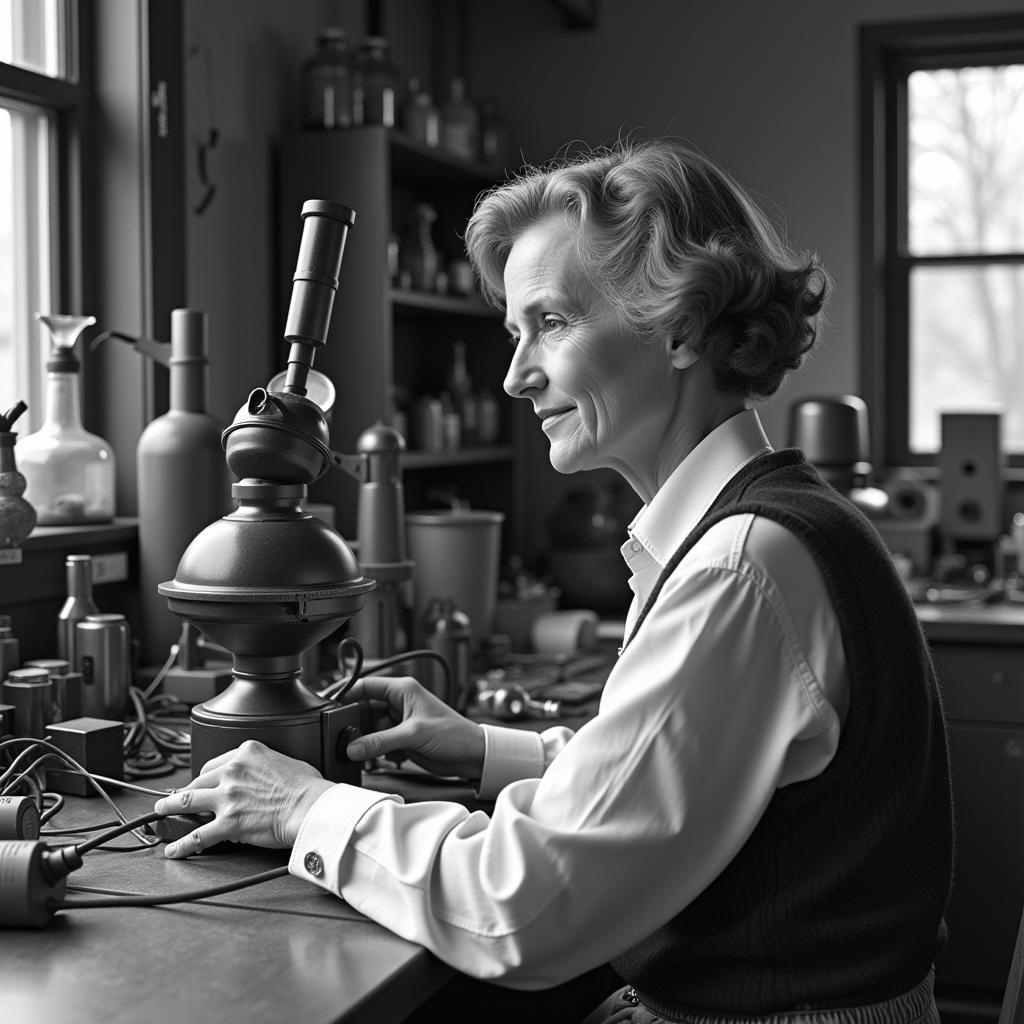Nuclear fission’s discovery, a pivotal moment in science, owes much to the often-overlooked contributions of women scientists. This article delves into the history of this groundbreaking discovery, highlighting the crucial roles played by these brilliant women amidst a male-dominated scientific landscape.
Unveiling the Secrets of the Atom: A Collaborative Effort
The story of nuclear fission is one of intense research, international collaboration, and unexpected discoveries. While often associated with names like Otto Hahn and Fritz Strassmann, the complete picture includes the indispensable contributions of brilliant women scientists who pushed the boundaries of scientific understanding. Lise Meitner, for example, played a critical role in interpreting the experimental results that led to the understanding of nuclear fission. Her deep understanding of physics and her collaboration with Otto Hahn were essential for comprehending the unprecedented phenomenon observed in their experiments.
Lise Meitner: The Unsung Heroine of Nuclear Fission
Lise Meitner’s story is one of resilience and brilliance. Facing discrimination as a Jewish woman in Nazi Germany, she was forced to flee to Sweden, leaving behind her research and collaborator, Otto Hahn. Despite these challenges, she continued to correspond with Hahn and provide crucial theoretical insights. It was Meitner who, along with her nephew Otto Frisch, explained the process of nuclear fission, coining the term itself. Her profound understanding of nuclear physics was essential in unlocking the secrets of the atom.
Beyond Meitner: Other Women Scientists Who Contributed to Nuclear Physics
While Meitner’s story is particularly compelling, she was not the only woman making significant strides in nuclear physics. Other women, often working behind the scenes, made vital contributions. For instance, Ida Noddack, a German chemist, first proposed the idea of nuclear fission in 1934, though her theory was initially dismissed. Her work, although overlooked at the time, foreshadowed the monumental discovery years later. These women, working against societal expectations and often facing gender bias, paved the way for future generations of female scientists.
The Importance of Recognizing Women in Science
The story of nuclear fission and the women scientists involved highlights the importance of recognizing and celebrating the contributions of women in science. Their stories not only inspire future generations but also remind us of the crucial role diversity and inclusion play in scientific progress. By acknowledging the often-overlooked contributions of women, we gain a more complete and accurate understanding of scientific history and pave the way for a more equitable future.
What were the challenges faced by women scientists during the discovery of nuclear fission?
Women scientists faced significant challenges, including gender bias, lack of recognition, and limited opportunities. Lise Meitner, for instance, was denied the Nobel Prize despite her crucial role in understanding nuclear fission.
How did the discovery of nuclear fission change the world?
The discovery of nuclear fission revolutionized science and had profound implications for energy production and warfare, leading to the development of nuclear weapons and nuclear power plants.
Conclusion: Honoring the Legacy of Women in Nuclear Fission’s Discovery
The discovery of nuclear fission women scientists in highlight demonstrates the essential role of women in scientific breakthroughs. Their stories of resilience, ingenuity, and unwavering dedication deserve recognition and serve as an inspiration for aspiring scientists everywhere. Let us continue to explore and celebrate the invaluable contributions of women in shaping our understanding of the world.
FAQ
- Who discovered nuclear fission? Otto Hahn and Fritz Strassmann are credited with the experimental discovery, but Lise Meitner and Otto Frisch provided the theoretical explanation.
- What is nuclear fission? Nuclear fission is the process of splitting a heavy atomic nucleus into smaller nuclei, releasing a large amount of energy.
- Why was Lise Meitner’s contribution so important? Meitner’s theoretical work was crucial for interpreting the experimental results and understanding the process of nuclear fission.
- What were the challenges faced by women scientists at the time? Women scientists faced discrimination, limited opportunities, and lack of recognition for their work.
- What is the legacy of women in nuclear physics? Women like Lise Meitner, Ida Noddack, and others paved the way for future generations of female scientists and demonstrated the importance of diversity in science.
- What are some applications of nuclear fission? Nuclear fission is used in nuclear power plants for energy production and in the development of nuclear weapons.
- Where can I learn more about the history of nuclear fission? Numerous books, articles, and online resources provide in-depth information about the history and science behind nuclear fission.
Mô tả các tình huống thường gặp câu hỏi
Người dùng thường quan tâm đến vai trò cụ thể của Lise Meitner, những khó khăn mà bà gặp phải, và tầm quan trọng của việc công nhận đóng góp của phụ nữ trong khoa học.
Gợi ý các câu hỏi khác, bài viết khác có trong web.
- Vai trò của Ida Noddack trong việc khám phá ra sự phân hạch hạt nhân là gì?
- Tác động của phân hạch hạt nhân đối với xã hội là gì?
- Phụ nữ còn đóng góp những khám phá khoa học quan trọng nào khác?
